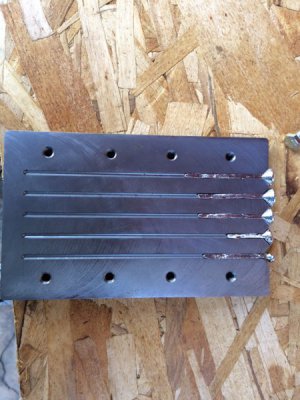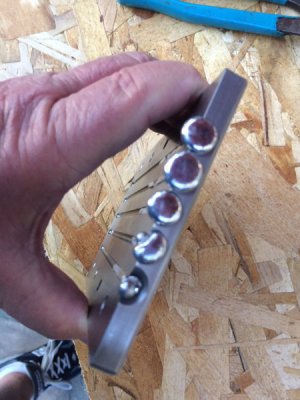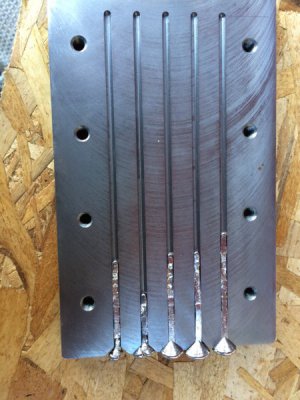I have zero experience with casting metal but that hasn't deterred me from attempting to make a lead sinker mold. And I must say it's not going well. The finished sinker/weight shape is 1/8" half round about 9/16" to 5/8" long. The grooves in the mold are about 6-1/2" long, width is 1/8" and depth is 1/16". The mold is preheated to 300 deg. F then the molten lead is poured. The attached pictures show what's happening, or not, during the pour process. I'm thinking I need to add a vent to the closed end of each groove but what do I know.
This started out as a request from a friend for what I thought was a few dozen weights. He's now telling me a relative of the inventor of the "No Name Lure" wants to relaunch the lure business and make thousands of these and sell them commercially. Maybe a mold is not the way to go. Possibly injection molding or extruding would be better. I'm interested/anxious to hear what you all have to say.
Thanks



This started out as a request from a friend for what I thought was a few dozen weights. He's now telling me a relative of the inventor of the "No Name Lure" wants to relaunch the lure business and make thousands of these and sell them commercially. Maybe a mold is not the way to go. Possibly injection molding or extruding would be better. I'm interested/anxious to hear what you all have to say.
Thanks



